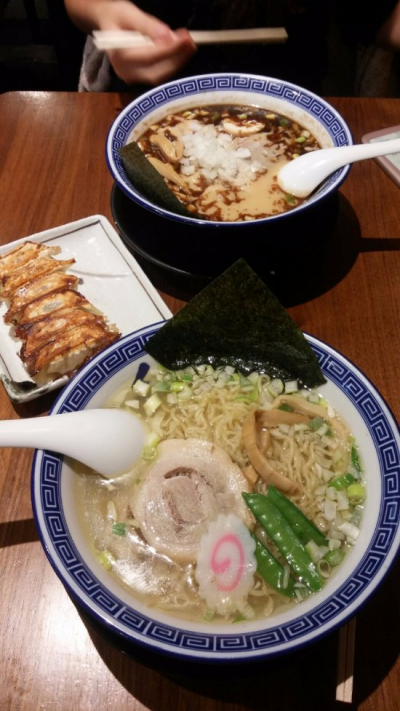

In the midst of Fukushima Prefecture in Japan lies the city of Fukushima and its university, which offer a unique blend of tradition and natural beauty. This report describes my experiences and adventures during my two semesters abroad in this fascinating region and hopefully helps you determine whether Fukushima University is the place where you want to spend your study abroad year.
General Information about Fukushima Prefecture
Fukushima Prefecture spans over 13,783 square kilometers, featuring diverse landscapes from rugged mountains to tranquil lakes. The distinct seasons present a vivid picture of cherry blossoms in spring, lush greenery in summer, vibrant foliage in autumn, and pristine snowscapes in winter. In 2023, Fukushima Prefecture was one of Japan's hottest prefectures, with maximum temperatures reaching up to 40°C, while winters saw heavy snowfall and temperatures dropping to -10°C. Although there is heating in your room and air conditioning, you should be aware that the peak summer season can be quite challenging, so exercise caution in your choice of clothing.
Rich in history, Fukushima hosts centuries-old shrines, temples, and castles that celebrate Japanese culture. Beyond its natural beauty, Fukushima has become a symbol of resilience, having faced the challenges of the Great East Japan Earthquake of 2011 and the Fukushima Daiichi nuclear disaster. This strength has made the region an inspiring example of rebuilding and community spirit.
The City of Fukushima
The city of Fukushima, the capital of the prefecture with over 280,000 residents, seamlessly combines modernity and tradition. Its cultural offerings include museums, galleries, and theaters, while its streets feature charming cafes and shops that provide insights into Japanese aesthetics. The city's culinary scene, with its local specialties and regional dishes, is a delightful journey of discovery.
Radiation
One of my biggest concerns, as well as that of my parents, before I attended Fukushima University was radiation in the area. Many of us only know Fukushima through the nuclear disaster of 2011, which is why many people from Europe and the USA still think Fukushima is an uninhabited wasteland like Chernobyl. In truth, Fukushima City and its university are more than 60 kilometers away from the disaster site, which does not mean that the city has not felt the effects of the catastrophe. Radiation levels in Fukushima City and at the university are now lower than in most major cities around the world. Life there is completely safe in terms of radiation. If you want, you can even take some excursions to the former evacuation zone as part of certain courses and participate in local festivals and reconstruction efforts. There are also excursions to the still-existing evacuation zone, including a visit to the nuclear power plant where the accident occurred. I myself was about 200 meters away from the exploded reactor during one such excursion while continuously monitoring radiation levels. In the end, it turned out that I had received radiation exposure equivalent to a year in Chicago. So, if you are worried about radiation in Fukushima, rest assured. Due to a variety of strict radiation measures, Fukushima may even be the safest place against radiation.
Location of Fukushima City
Fukushima City has a strategically convenient location in the heart of Japan with easy connections to major cities, especially Tokyo. Fukushima City is about 240 kilometers north of Tokyo and is easily accessible via Japans Shinkansen system, the high-speed train. The Tohoku Shinkansen line connects Fukushima City to Tokyo and other cultural cities in the Tohoku region like Sendai, Morioka, Aomori, etc., in just a few hours, making it an ideal starting point for both students and travelers alike.
Sights in Fukushima and Surroundings
Fukushima Prefecture and the surrounding Tohoku region offer a rich variety of attractions and landmarks. In Fukushima Prefecture itself, Goshiki-numa Lake in Bandai-Asahi National Park is a natural paradise with emerald, green lakes surrounded by picturesque scenery. Mount Bandai, an extinct volcano, offers breathtaking hiking trails and panoramic views of the region. In the Tohoku region, you'll find other gems such as the historic city of Sendai with Aoba Castle and Osaki Hachimangu Shrine. Aizu-Wakamatsu in Fukushima Prefecture is known for Tsuruga Castle and traditional samurai culture. All of these regions are easily accessible from Fukushima City, offering you the opportunity to discover Fukushima's culture, history, and natural beauty and inviting you to explore the diversity of Japan in all its splendor.
The Culinary Capital of Japan
The culinary experience in Fukushima is a true delight for the senses, offering a variety of flavors that reflect the regional diversity. Fukushima Prefecture is known for its top-quality agricultural products, including juicy peaches, crisp apples, and delicious rice crops. A local delicacy produced in Fukushima is Kozuyu, a traditional rice dish enhanced with a special soy sauce from the region. Sake enthusiasts will appreciate Fukushima Prefecture for its high-quality sake varieties, which are popular worldwide. Visitors should definitely visit local restaurants to try dishes like Aizu-Gyutan (beef tongue), local soba noodles, and fresh sashimi. The gastronomic diversity and quality in Fukushima are a reflection of Japan's rich culinary traditions, offering you an unforgettable taste experience that is also extremely affordable.
My friends and I had a favorite restaurant called Menya Kusabi Fukushima, which we visited several times a week. For just 5 Euros, you could get a huge bowl of ramen and two side dishes like Gyoza, Karage, or fried rice.